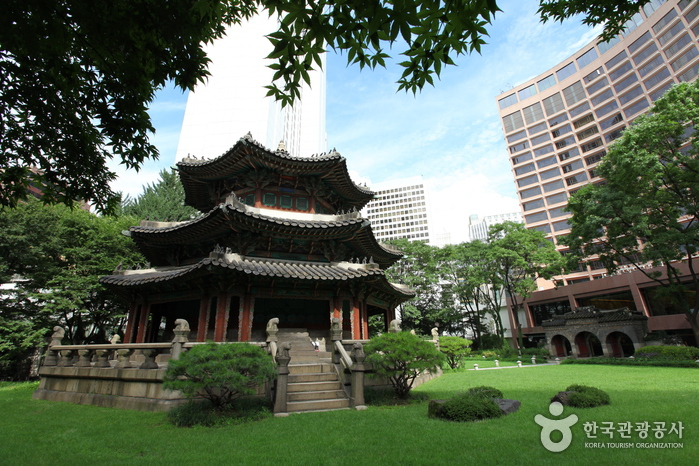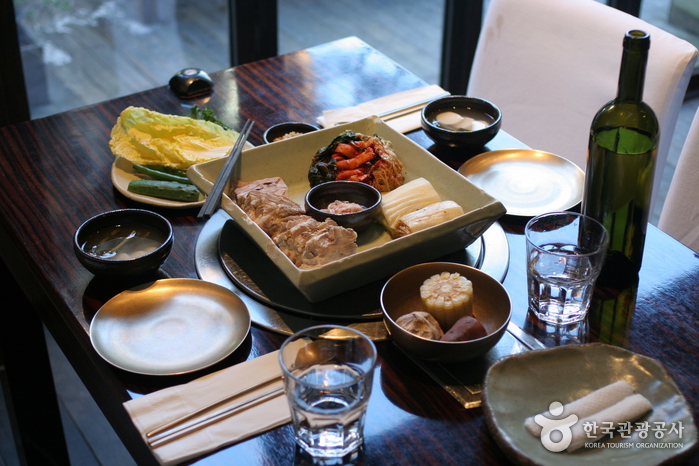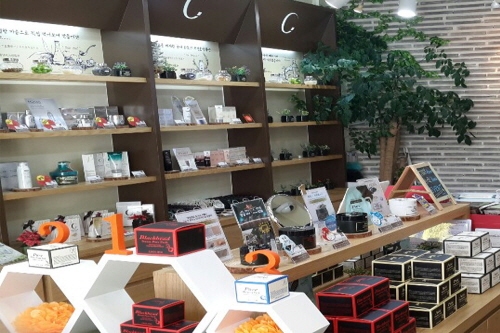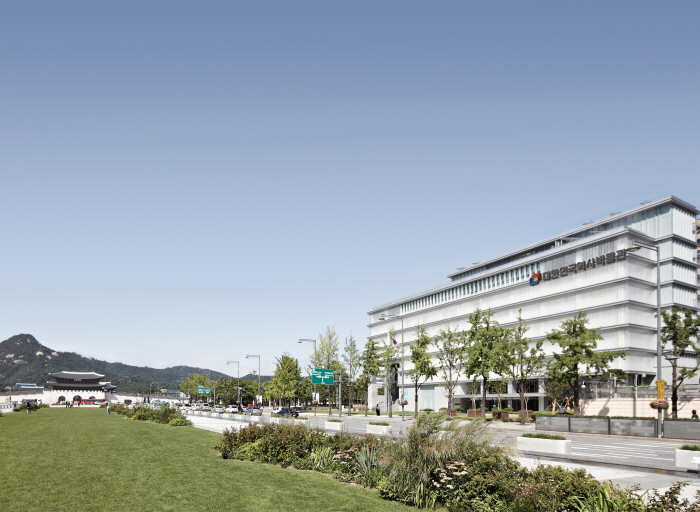Berluti - Shinsegae Main Branch [Tax Refund Shop] (벨루티 신세계 본점)
5.4Km 2024-04-18
6F, 63, Sogong-ro, Jung-gu, Seoul
-
Omega - Shinsegae Main Branch [Tax Refund Shop] (오메가 신세계 본점)
5.4Km 2024-04-18
63, Sogong-ro, Jung-gu, Seoul
-
Dior - Shinsegae Main Branch (1F) [Tax Refund Shop] (디올 신세계 본점 1층)
5.4Km 2024-04-23
1F, 63, Sogong-ro, Jung-gu, Seoul
-
Fendi - Shinsegae Main Branch (2F) [Tax Refund Shop] (펜디 신세계 본점2층)
5.4Km 2024-04-19
63, Sogong-ro, Jung-gu, Seoul
-
Duko S.T.Dupont - Shinsegae Main Branch [Tax Refund Shop] (듀코 신세게(백)본점 듀퐁)
5.4Km 2024-04-16
6F Shinsegae Department Store Main Branch, 63, Sogong-ro, Jung-gu, Seoul
-
Hwangudan Altar (환구단)
5.4Km 2020-05-07
112, Sogong-ro, Jung-gu, Seoul
+82-2-3396-5842
Hwangudan Altar, also called Hwandan Altar, refers to an altar complex for the rite of heaven. The rites were first performed in the Goryeo dynasty by King Seongjong in the first month of 983 (2nd year of his reign), but was repeatedly adopted and abolished, and eventually stopped at the start of the Joseon dynasty.
Then in 1456 (2nd year of King Sejo), the practice was temporarily standardized and the rites were performed at Hwangudan Altar again in 1457. However, rites were again abolished in 1464 (10th year of King Sejo). It wasn’t until 1897 (34th year of King Gojong) when the Joseon dynasty was renamed as the Korean Empire and King Gojong ascended to emperor, that the rite was revived.
Now, Hwangungu Shrine and three stone drums stand at the location of the former altar complex. The three stone drums symbolize the instruments used for the rites. The shrine was completed in 1899, two years after the altar was started in 1897. Today, the Hwangungu Shrine still stands within the hotel grounds of the Westin Chosun Hotel.
Bank of Korea Money Museum (화폐박물관)
5.4Km 2024-03-18
39 Namdaemun-ro, Jung-gu, Seoul
This Renaissance-style three-story stone building is the museum of the Bank of Korea. The older Bank of Korea was established as the central bank of the Korean Empire in 1909 and has been designated as a National Historical Site. During the Japanese colonial period, the bank was renamed the Bank of Joseon, and the building was used as the main and head office of the Bank of Korea until 2001. The building has been used as the nation’s Money Museum since June 2001 in celebration of the 50th anniversary of the Bank of Korea. The museum has 13 exhibition rooms on two floors, with one basement floor and two above-ground floors. It holds special exhibitions of various currency and art collections to provide domestic and foreign visitors with the opportunity to enjoy the history and culture of currency. Visitors can learn about the Bank of Korea and the central banking system, as well as how to identify counterfeit notes and how money is produced and circulated. It is also a good place for children to learn about currencies from around the world. Advance reservations are required, and parking is not available. The museum can easily be reached via subway by getting off at Hoehyeon Station (Seoul Subway Line 4) and exiting through Exit 7.
Gaehwaok (개화옥)
5.4Km 2019-08-05
7, Apgujeong-ro 50-gil, Gangnam-gu, Seoul
+82-2-549-1459
This restaurant specializes in tasty bulgogi served in an attractive atmosphere. Lightly spiced, and a high-grade beef, bulgogi is cooked on a Korean-style brazier for optimum temperature and taste. Also famous are bossam, consisting of sliced pork and kimchi, and spicy beef and vegetable salad. A delicious meal goes well with a selection of over 50 name value wines for an affordable price.
CAOLION Cosmetics (카오리온)
5.4Km 2025-01-06
8, Apgujeong-ro 50-gil, Gangnam-gu, Seoul
+82-70-4632-4420
Established in 1995, CAOLION Cosmetics has been making hypoallergenic cosmetics for sensitive skin for 18 years.
The company launched natural cosmetics for the first time with a 3-free principle: pigment-free, fragrance-free, and alcohol free. At the present, the company has developed products that are exclude up to 17 adverse ingredients such as preservatives and mineral fibers.
CAOLION was the first Korean brand to enter into LVMH (Louis Vuitton Monët Hennessy)
Group's global cosmetics retail chain SEPHORA after being recognized as a quality natural cosmetic product for senstive skin after over two years of quality control. It is loyal customers as well.
National Museum of Korean Contemporary History (대한민국역사박물관)
5.4Km 2022-12-27
198, Sejong-daero, Jongno-gu, Seoul
+82-2-3703-9200
The National Museum of Korean Contemporary History opened on December 26, 2012, and showcases Korea's modern history, from the opening of Incheon Port to current times. The museum provides an in-depth look at the changes in the nation through exhibitions and educational programs, as well as researching, developing, and collecting materials. The museum is comprised of four exhibition halls; Prelude to the Republic of Korea, Foundation of the Republic of Korea, Development of the Republic of Korea, and Modernization of South Korea, toward the World. In addition, the Korean History Dream Village features a hands-on program hall for children to learn modern and contemporary history. In addition to special exhibitions, the museum also offers educational and cultural programs for children.
![Berluti - Shinsegae Main Branch [Tax Refund Shop] (벨루티 신세계 본점)](http://tong.visitkorea.or.kr/cms/resource/48/2890448_image2_1.jpg)
![Omega - Shinsegae Main Branch [Tax Refund Shop] (오메가 신세계 본점)](http://tong.visitkorea.or.kr/cms/resource/90/2890490_image2_1.jpg)
![Dior - Shinsegae Main Branch (1F) [Tax Refund Shop] (디올 신세계 본점 1층)](http://tong.visitkorea.or.kr/cms/resource/69/2890569_image2_1.jpg)
![Fendi - Shinsegae Main Branch (2F) [Tax Refund Shop] (펜디 신세계 본점2층)](http://tong.visitkorea.or.kr/cms/resource/85/2890585_image2_1.jpg)
![Duko S.T.Dupont - Shinsegae Main Branch [Tax Refund Shop] (듀코 신세게(백)본점 듀퐁)](http://tong.visitkorea.or.kr/cms/resource/10/2887810_image2_1.jpg)





 English
English
 한국어
한국어 日本語
日本語 中文(简体)
中文(简体) Deutsch
Deutsch Français
Français Español
Español Русский
Русский